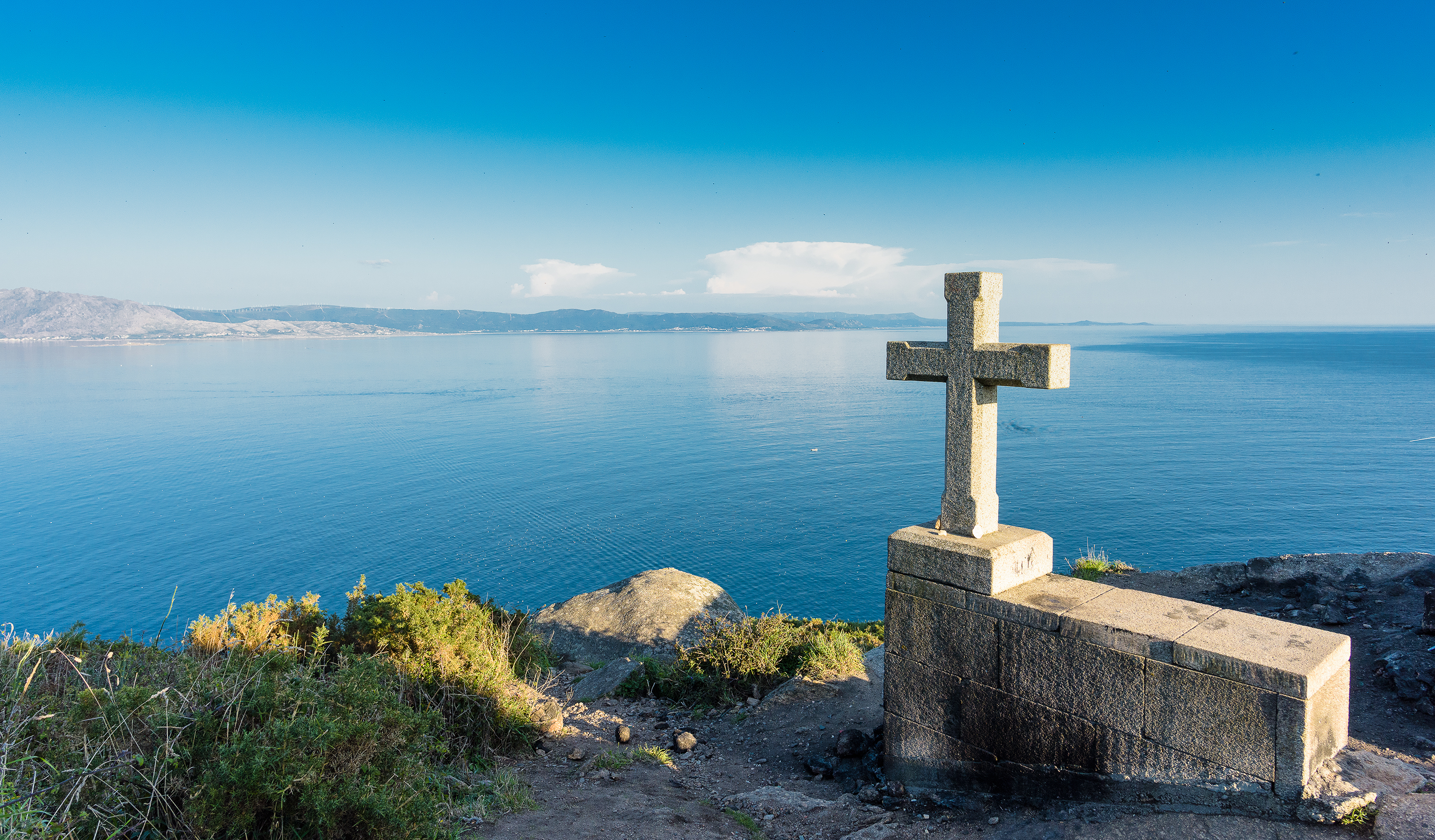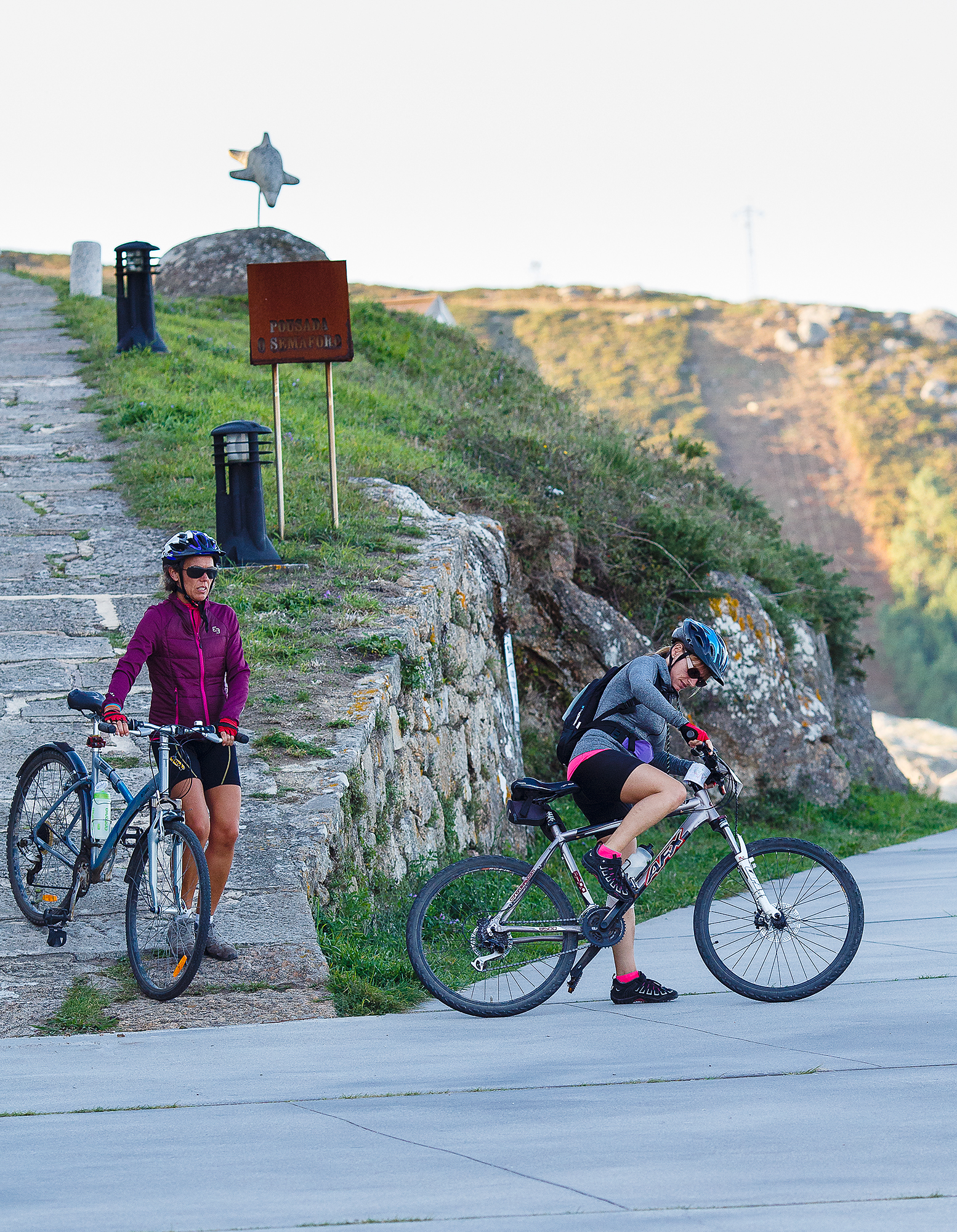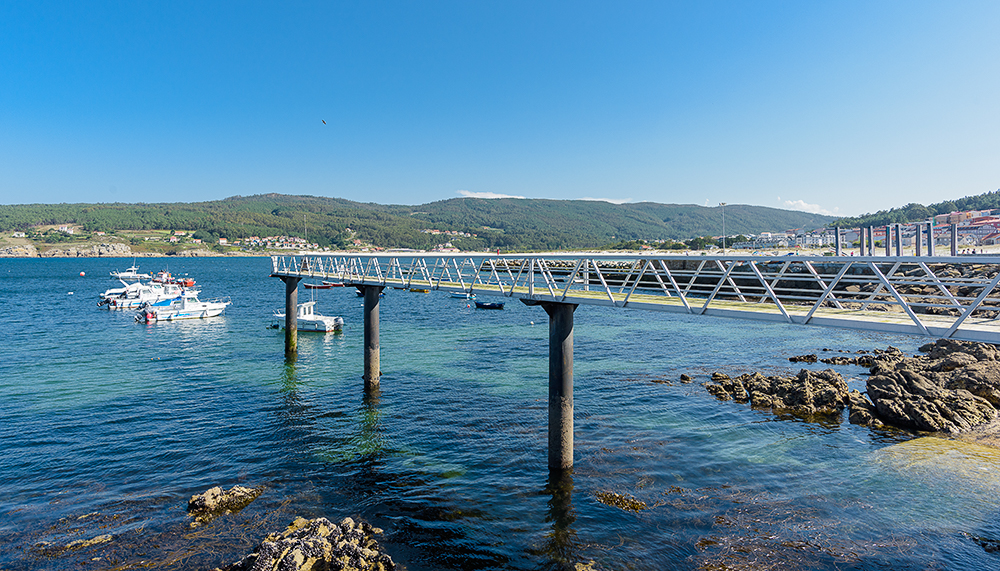The Finisterrana Route by Bicycle
Erea FabeiroTable of Contents
From Santiago the End of the World
The Camino de Santiago does not necessarily end at the majestic Plaza del Obradoiro. For many pilgrims, the journey continues beyond, reaching the stunning Atlantic coast at the mythical Cape Finisterre (Fisterra). This final stretch, known as the Finisterrana Route, allows pilgrims to extend their experience to the legendary “End of the World.” While it is traditionally completed on foot, more and more cyclists are taking on the challenge, enjoying a journey filled with history, nature, and deep spiritual connection.
What is the Finisterrana?
Since 1997, the Municipality of Finisterre has issued the Finisterrana, a certificate similar to the famous Compostela, which certifies the pilgrimage to Finisterre. To obtain it, cyclists must stamp their credential along the route, just like on the Camino de Santiago. Over the years, this route has gained significance and has become a natural extension for those eager to continue exploring Galicia beyond Santiago.
Why do the Finisterrana Route by bicycle?
Cycling the Finisterrana Route is a perfect option for those seeking a challenging yet accessible experience, combining asphalt sections, rural paths, and forest trails. The route is well-signposted and offers breathtaking landscapes, from the lush inland valleys to the stunning views of the Atlantic Ocean.
Some of the main advantages of cycling the Finisterre Route include:
- Faster and more comfortable: While the journey takes 3 to 4 days on foot, it can be completed in two comfortable cycling days.
- Diverse landscapes: The route passes through mountains, rivers, charming villages, and the Galician coastline.
- Manageable physical challenge: While there are demanding climbs, most of the route is suitable for cyclists with moderate experience.
- Unique experience: Reaching the “End of the World” and gazing at the vast ocean is a perfect finale for any pilgrimage.
Itinerary of the Finisterrana Route by bicycle
Day 1: Santiago de Compostela – Olveiroa (58 km)
Departure from Plaza del Obradoiro
The adventure begins in the heart of Santiago de Compostela. After admiring the grandeur of the Cathedral and the iconic Hostal de los Reyes Católicos, we set off, descending via Rúa das Hortas to connect with Calle Galeras. From here, the iconic yellow arrows will guide our journey.
Section to Negreira (21 km)
We pass through small villages, alternating asphalt stretches with dirt paths. One of the most challenging points is the Alto de Mar de Ovellas, after which we reach Ponte Maceira, a spectacular site with a medieval bridge over the Tambre River. A few kilometers ahead lies Negreira, a great place for a break, with restaurants offering affordable homemade food.
Negreira – Olveiroa (37 km)
Leaving Negreira, we face a gradual climb of about 10 km to the village of Vilacoba. The route then becomes easier until we reach Olveiroa, where we find numerous hostels and rural houses to spend the night. A hearty dinner and a good rest are recommended, as the next day promises the spectacular arrival at Finisterre.
Day 2: Olveiroa – Finisterre Lighthouse (47 km)
Route to Cee (30 km)
The second day starts with dirt paths through the municipality of Dumbría. Soon, we reach the Hermitage of Virxe das Neves, a place of deep pilgrimage tradition. As we approach the coast, we enjoy breathtaking views of the Atlantic.
After a steep and technical descent, we arrive at the seaside town of Cee, where we recommend stopping for lunch. This town, along with nearby Corcubión, offers excellent seafood and fresh fish dishes.
From Cee to Finisterre (17 km)
From Cee, we continue through small hills and pass by Estorde Beach, a great spot to rest and recharge. We then reach Sardiñeiro de Abaixo, and after a spectacular coastal stretch, we arrive at Finisterre, the last town before the final destination.
Arrival at Finisterre Lighthouse
The last section takes us to the emblematic Finisterre Lighthouse, with its iconic “Petones” (Petón do Corvo and Petón Cercado). This place, full of symbolism and natural beauty, was considered by the Romans as the end of the known world. Reaching the lighthouse and witnessing the sunset over the ocean is one of the most awe-inspiring experiences of the Camino de Santiago.
Tips for cycling the Finisterrana Route
- Proper bicycle: A mountain or gravel bike is recommended, as the route includes dirt paths and uneven terrain.
- Pack light: Bring only essentials: comfortable clothing, a rain jacket, basic tools, and spare parts.
- Plan accommodations: While there are plenty of options, booking in advance is advisable during peak seasons.
- Respect the environment: This route has great natural and cultural value, so it’s important to keep it clean and follow local regulations.
What to do upon arrival in Finisterre?
Once in Finisterre, don’t miss:
- Collecting the Finisterrana at the tourist office.
- Visiting the Finisterre Lighthouse and watching the sunset.
- Exploring the historic center of Finisterre, with its fishing port and charming streets.
- Enjoying the local cuisine, especially fresh seafood and fish.
- Relaxing at Mar de Fóra Beach, one of the most wild and beautiful in the area.
Conclusion
The Finisterrana Route by bicycle is an unforgettable adventure for those wishing to extend their pilgrimage and reach the End of the World. With a combination of history, breathtaking landscapes, and physical challenge, this route has become one of the best options for cyclists looking for a unique experience in Galicia.
If you’re planning to do the Camino de Santiago and want more, don’t hesitate to pedal to Finisterre and experience one of the most magical routes in Spain. Buen Camino and Ultreia!



